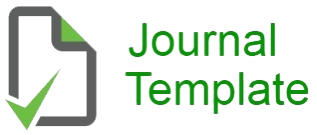TAXATION, ACCOUNTING AND BUSINESS ASPECTS OF CORPORATE RESTRUCTURING IN THE FORM OF QUASI REORGANISATION
Abstract
Quasi reorganisation is a corporate restructuring process that involves comprehensive adjustments in taxation, accounting and business strategy aspects to address financial issues and improve operational performance. The process requires strategic financial management and adjustment of accounting practices to reflect a more accurate economic position post-restructuring. In the context of taxation, quasi reorganisation makes use of tax provisions to optimise tax burden and strengthen cash flow, while in accounting, the process involves the reassessment of assets and liabilities and the presentation of transparent financial statements. From a business perspective, restructuring demands revision of strategies and operational models to improve competitiveness and market position. The main objectives of quasi reorganisation are to strengthen the financial and operational structure of the company, ensure long-term sustainability, and increase value for stakeholders. This study analyses how the effective integration of taxation, accounting, and business strategy in quasi reorganisation can be the key to successful corporate restructuring.
References
Altman, E. I. (2015). Corporate financial distress and bankruptcy: Predict and avoid bankruptcy, analyze and invest in distressed debt. Wiley.
Beatty, A., & Liao, S. (2021). Effects of Corporate Restructuring on the Fairness of Executive Compensation. Journal of Financial Economics. https://doi.org/10.1016/j.jfineco.2020.08.023
Cohn, J. B., & Mills, L. F. (2017). The evolution of the financial reporting environment: Audit implications of corporate tax reform. The Accounting Review, 92(6), 53–81. https://doi.org/10.2308/accr-51722
DeAngelo, H., DeAngelo, L., & Skinner, D. J. (2015). Are dividends disappearing? Dividend concentration and the consolidation of earnings. Journal of Financial Economics, 79(3), 575–608. https://doi.org/10.1016/j.jfineco.2004.09.005
Eilifsen, A., Knechel, W. R., & Wallage, P. (2018). Auditing and Assurance Services. McGraw-Hill Education.
Epstein, B. J., & Jermakowicz, E. K. (2016). Interpretation and Application of International Financial Reporting Standards. Wiley.
Foster, B. K. (2018). The Use of Growth Analysis in Tax Enforcement Strategies. Applied Economics and Finance, 5(1).
Freedman, J. (2017). Taxation: Financial Ratios and Tax Auditing. Edward Elgar Publishing.
Gilson, S. C. (2018). Creating Value Through Corporate Restructuring: Case Studies in Bankruptcies, Buyouts, and Breakups. Wiley.
Grinstein, Y., & Michaely, R. (2016). Corporate governance and the timing of earnings announcements. Review of Financial Studies, 29(12), 3427–3458. https://doi.org/10.1093/rfs/hhw011
Horngren, C. T., Sundem, G. L., & Stratton, W. O. (2019). Introduction to Management Accounting. Prentice Hall.
Hotchkiss, E. S., & Mooradian, R. M. (2019). Acquisitions as a Means of Restructuring Firms in Chapter 11. Journal of Financial Intermediation, 8(4), 240–262. https://doi.org/10.1006/jfin.1999.0276
Lopez, D. M., & Peters, G. F. (2019). Using Financial Ratios to Identify IRS Audit Targets. National Tax Journal, 72(1).
Madekhan, M. (2019). POSISI DAN FUNGSI TEORI DALAM PENELITIAN KUALITATIF. JURNAL REFORMA, 7(2), 62–62. https://doi.org/10.30736/rfma.v7i2.78
Miller, A. (2022). Tax Audit Techniques and Financial Ratio Analysis. In Advanced Techniques in Public Finance and Taxation (pp. 143–159).
Miller, P. B. W., & Bahnson, P. R. (2020). Quality Financial Reporting. McGraw-Hill Professional.
Moha, I., & sudrajat, D. (2019). RESUME RAGAM PENELITIAN KUALITATIF. Query date: 2024-05-25 20:59:55. https://doi.org/10.31227/osf.io/wtncz
Narayan, E., & Sharma, S. M. (2018). The Role of Growth Metrics in Tax Audit Selection. Financial Accountability & Management, 34(4).
Rofiah, C., & Bungin, B. (2021). Qualitative methods: Simple research with triangulation theory design. Develop, 5(1), 18–28.
Slemrod, J., & Gillitzer, C. (2018). Tax Systems. MIT Press.
Taylor, G., & Richardson, G. (2017). The Impact of Financial Ratios on Tax Audits: Evidence from the Australian Tax Office. Australian Tax Forum, 32(4).
Weil, R. L., Schipper, K., & Francis, J. (2017). Financial Accounting: An Introduction to Concepts, Methods, and Uses. Cengage Learning.
Downloads
Published
Issue
Section
License
Copyright (c) 2024 INTERNATIONAL JOURNAL OF ECONOMIC LITERATURE

This work is licensed under a Creative Commons Attribution-NonCommercial-ShareAlike 4.0 International License.
INTERNATIONAL JOURNAL OF ECONOMIC LITERATURE © 2023 by Adisam Publisher is licensed under CC BY-SA 4.0







